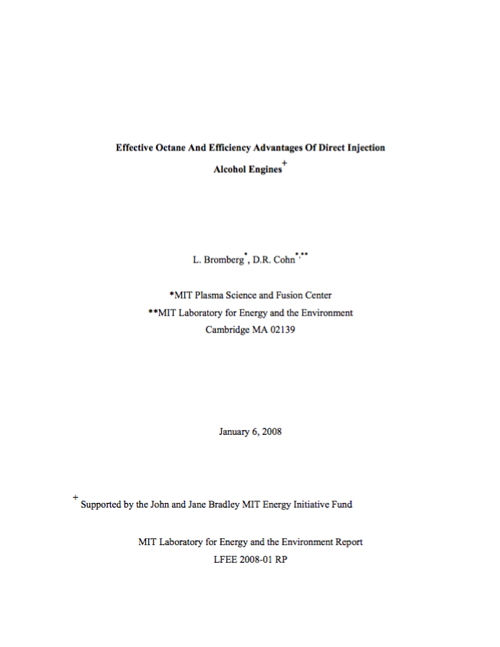Ethanol is receiving great interest as an alternative fuel. Methanol is another alcohol fuel that could serve as a replacement for gasoline. Although it is currently receiving much less attention, it has the potential to play an important role. Like ethanol, methanol also has the advantage of being a liquid fuel and it can be produced from gasification of a variety of feedstocks using well established thermal chemical technology. These feedstocks include coal, natural gas, biomass and various types of waste. This paper discusses the high effective octane number and efficiency advantages of methanol and ethanol when used in direct injection engines. Octane number represents the resistance of a spark ignition engine to knock (unwanted detonation which can damage the engine). The high intrinsic octane numbers of ethanol and methanol are well known. However, a much greater effective octane number can be effectively realized through the knock resistance provided by the high level of vaporization cooling that occurs when methanol or ethanol is directly injected into the engine cylinders. A computational model is used in this paper to determine the knock resistance and effective octane number of these alcohol fuels when they are directly injected. The model indicates that the effective octane numbers are around 160 for ethanol and 180 for methanol. The high compression ratio, high degree of turbocharging and aggressive engine downsizing enabled by the high effective octane number of methanol could provide an efficiency gain of 30 35% (for combined city-highway driving) relative to conventional port fueled gasoline engines. An additional gain of around 10% can be obtained by using reforming of methanol to enable ultra lean operation at low loads. The combination of these gains could thus potentially provide an efficiency gain of 4045% for direct injection methanol engines. This efficiency gain is significantly greater than the typical 2530% gain of turbocharged diesel engines.
MITEI Authors
 Leslie Bromberg
Research Engineer
Leslie Bromberg
Research Engineer
Plasma Science and Fusion Center
 Daniel Cohn
Research Scientist
Daniel Cohn
Research Scientist
MIT Energy Initiative
